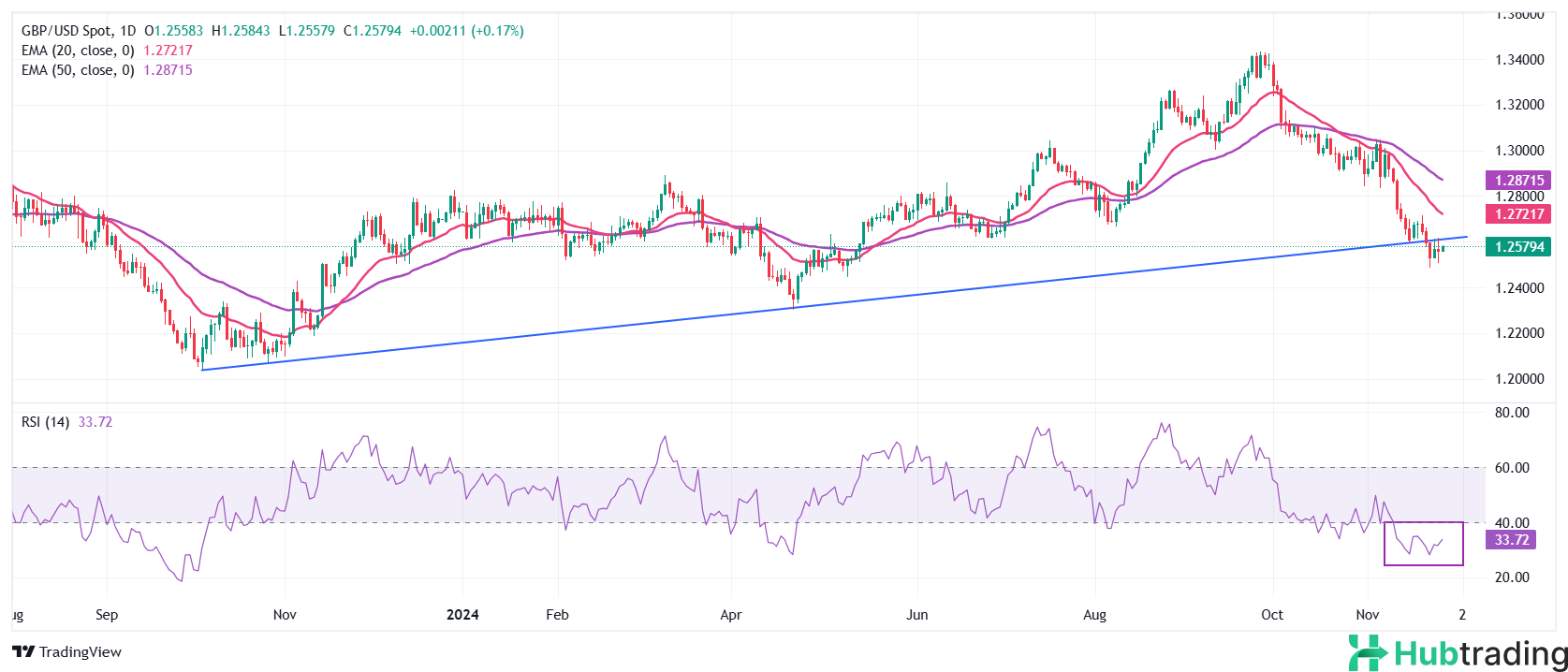The Pound Sterling (GBP) remains confined to a narrow range below 1.2600 against the US Dollar (USD) during Wednesday's London session, consolidating as the USD takes a backseat ahead of the release of the US Personal Consumption Expenditure (PCE) Price Index data for October, scheduled for 13:30 GMT. Economists predict that core PCE inflation, which excludes food and energy prices, will have risen to 2.8% year-over-year from 2.7% in September, with monthly growth expected to increase by 0.3%.
Investors are closely monitoring the core PCE data, as it is the Federal Reserve’s preferred inflation gauge for interest rate decisions. This data will play a critical role in shaping market expectations regarding the Fed's actions at its December meeting. According to the CME FedWatch tool, the probability of the Fed cutting rates by 25 basis points to 4.25%-4.50% in December has increased to 65% from 56% a week ago.
Dovish Fed expectations have grown following the release of the November 7 Federal Open Market Committee (FOMC) minutes, though they offered little guidance on the interest rate path. Some officials indicated that the Fed may pause its rate-cutting cycle if inflation remains high, while others suggested more aggressive easing if economic conditions or the labor market weaken.
Additionally, investors will focus on the revised Q3 GDP growth estimates, Durable Goods Orders, Personal Spending data for October, and Initial Jobless Claims for the week ending November 22.
The US Dollar Index (DXY) has remained under pressure this week, following US President-elect Donald Trump’s nomination of Scott Bessent as Treasury Secretary. Market participants expect Bessent to implement Trump’s trade policies gradually to avoid a full-scale trade war.
Daily Digest Market Movers: Pound Sterling Trades Cautiously Amid US Tariff Concerns
- The Pound Sterling shows mixed price action against its major peers on Wednesday, trading with caution as concerns grow over the potential impact of US tariff policies on the UK export sector.
- In a Tuesday interview with the Financial Times, Bank of England (BoE) Deputy Governor Clare Lombardelli highlighted that US trade tariffs could pose risks to economic growth, acknowledging that trade barriers would negatively affect growth in both the short and long term. However, Lombardelli refrained from speculating on the exact impact of proposed tariffs, stating it was "too early to quantify effects."
- Regarding BoE interest rate cuts, Lombardelli expressed a desire to see more evidence of cooling price pressures before supporting another rate reduction. In a speech at King’s Business School on Monday, she warned that inflation risks could remain elevated above the bank's forecast, with wage growth expected to normalize around 3.5-4% and the Consumer Price Index (CPI) potentially staying around 3% rather than the target 2%.
- With little to offer from the UK economic calendar this week, the Pound’s movement will largely be driven by market expectations for BoE interest rate decisions in December. Traders are anticipating that the BoE will keep rates unchanged at 4.75% next month.
Technical Analysis: Pound Sterling Struggles Below 1.2550

The Pound Sterling remains under pressure, trading below the upward-sloping trendline around 1.2550 against the US Dollar, which has been in place since the October 2023 low of 1.2040. The overall outlook for GBP/USD remains bearish, as the 20-day and 50-day Exponential Moving Averages (EMAs) at 1.2735 and 1.2883, respectively, continue to slope downward.
The 14-day Relative Strength Index (RSI) is firmly within the 20.00-40.00 range, signaling that the downside momentum remains intact.
Looking ahead, the pair is expected to find support near the May low of 1.2446. On the upside, resistance is likely to be encountered around the November 20 high at approximately 1.2720.





